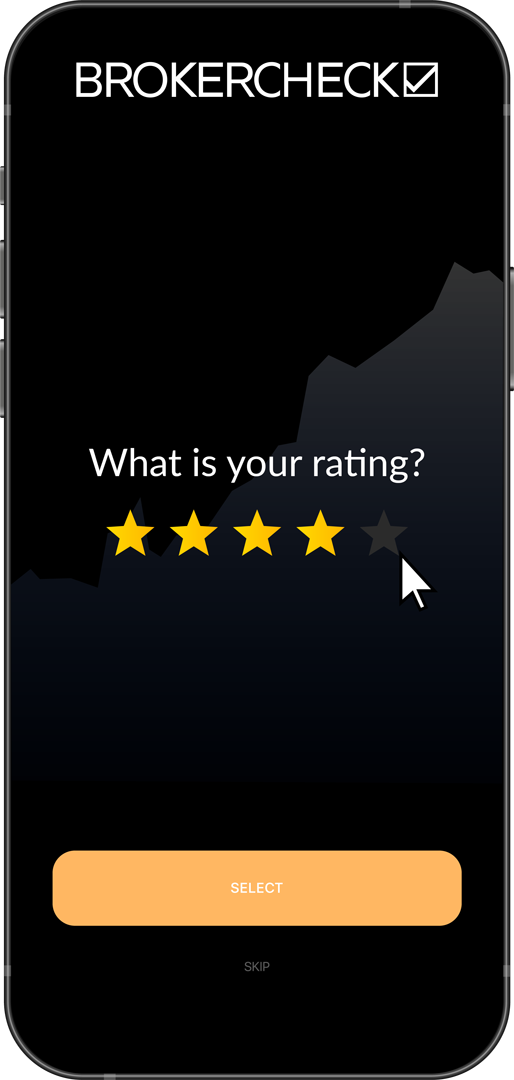1. What is the Money Flow Index?
The Money Flow Index (MFI) is a technical indicator that gauges the strength of money inflow and outflow over a specified period, typically 14 days. It is akin to the Relative Strength Index (RSI) but incorporates volume, making it a volume-weighted RSI. This characteristic allows traders to evaluate the intensity of buying or selling pressure and anticipate potential reversals in price trends.
MFI oscillates between 0 and 100, indicating overbought conditions when above 80 and oversold conditions when below 20. Its calculation involves analyzing the typical price of an asset and its volume. When the typical price multiplies with the volume, it results in the raw money flow. The MFI then compares the positive and negative money flows to determine the index value.

2. How is the Money Flow Index Calculated?
Detailed Calculation of the Money Flow Index
The Money Flow Index is computed through a multi-step process, beginning with the identification of the Typical Price (TP) for each period, which is the average of the high, low, and close prices.
Typical Price (TP) = (High + Low + Close) / 3
Once the TP is established, it is multiplied by the period’s volume to determine the Raw Money Flow (RMF). The RMF is positive when the current TP is higher than the previous period’s TP, indicating increased buying pressure. Conversely, it is negative when the current TP is lower than the previous period’s TP, reflecting increased selling pressure.
The next step involves segregating the RMFs over the chosen period into positive and negative money flows. The sum of positive money flows is then divided by the sum of negative money flows to calculate the Money Flow Ratio (MFR).
Money Flow Ratio (MFR) = (14-period Positive Money Flow) / (14-period Negative Money Flow)
Finally, the MFR is input into the MFI formula to determine the index value, which oscillates between 0 and 100:
MFI = 100 - (100 / (1 + Money Flow Ratio))
The value derived from this formula provides traders with an insight into the market’s conviction; a higher MFI suggests a bullish trend with strong buying pressure, while a lower MFI indicates a bearish trend with prevalent selling pressure. Crossovers of the MFI with overbought and oversold thresholds can signal potential trend reversals, prompting traders to scrutinize these levels closely.
| MFI Value | Market Condition |
|---|---|
| Above 80 | Overbought |
| Below 20 | Oversold |
Divergences between the MFI and price action often warn of potential price reversals. For instance, if the price hits a new high but the MFI fails to reach a new high, it could suggest diminishing buying pressure and a possible bearish reversal. Conversely, if the price hits a new low but the MFI does not, it might signal waning selling pressure and a potential bullish reversal. It is crucial for traders to use MFI in conjunction with other technical indicators and analysis methods to validate these signals.
2.1. Understanding the Money Flow Index Formula
Grasping the Nuances of the MFI Formula
Delving into the Money Flow Index (MFI) formula reveals a nuanced approach to measuring market sentiment. At its core, the formula hinges on the concept of the Money Flow Ratio (MFR), which is pivotal in discerning the balance of trading pressure. To fully grasp the formula’s mechanics, it’s essential to appreciate the significance of each component and the role it plays in the MFI’s final output.
The Typical Price (TP) and the Raw Money Flow (RMF) serve as the building blocks for the MFR. The TP’s role is to provide a snapshot of an asset’s price equilibrium for a given period, while the RMF extends this by factoring in the trade volume, thus offering a more comprehensive view of money flow. It’s this multiplication of TP with volume that infuses the MFI with its volume-weighted characteristic, setting it apart from similar momentum oscillators.
Positive and negative money flows are then dissected to reflect the market’s buying and selling intensity. Here, the differentiation between positive and negative flows isn’t arbitrary; it’s a direct reflection of how current price action compares to the previous period. This comparison is crucial as it encapsulates the momentum aspect of the market, revealing whether buyers or sellers are gaining the upper hand.
The MFR, a quotient of the sum of positive money flows to negative money flows, is where the MFI formula begins to crystallize the market’s conviction. By comparing periods of predominately upward price movements against those of downward movements, the MFR serves as a gauge for the relative strength of market participants’ sentiment.
Interpreting the MFI requires an understanding that its value is inversely related to the Money Flow Ratio. As the MFR increases, indicating stronger positive money flow, the MFI approaches 100, signaling bullish conditions. Conversely, a decreasing MFR, suggesting stronger negative money flow, pulls the MFI towards 0, hinting at bearish conditions. This inverse relationship is critical as it transforms the MFR into an index that oscillates within a bounded range, making it easier for traders to identify overbought or oversold conditions.
| Component | Role in MFI Formula | Influence on MFI Value |
|---|---|---|
| Typical Price (TP) | Equilibrium price snapshot for a period | Base for money flow |
| Raw Money Flow (RMF) | TP adjusted for volume, reflects momentum | Determines MFR |
| Money Flow Ratio | Sum of positive/negative money flows | Inversely affects MFI |
| MFI Value | Resultant index, depicts buying/selling pressure | Signals market conditions |
The MFI’s reliance on volume data adds a layer of depth to its analysis, offering a more textured interpretation of market trends. By understanding each element of the MFI formula, traders can enhance their ability to decipher complex market dynamics and make more informed decisions.
2.2. Identifying the Money Flow Index Best Period
Optimal Timeframe for MFI Analysis
Selecting the most effective period for the Money Flow Index (MFI) hinges on the trader’s strategic approach and the market’s volatility. While the default setting is 14 days, swing traders might adjust this to a shorter timeframe to capture quicker market movements. Conversely, long-term investors may extend the period to smooth out short-term volatility and highlight more significant trend shifts.
Intraday traders often recalibrate the period to a much shorter timescale, such as 5 or 10 minutes, to align with the swift pace of their trading style. This adjustment allows them to respond to rapid changes in money flow, which are less apparent on daily charts. However, a reduced period can also lead to more false signals, necessitating a robust risk management strategy.
Market liquidity must also be factored into the period selection. Highly liquid markets, with substantial trading volumes, can often accommodate shorter MFI periods without significantly increasing false signals. In contrast, markets with lower liquidity may require a longer period to provide reliable signals, as volume data in such markets can be sporadic and less indicative of true market sentiment.
| Trading Style | Suggested MFI Period | Considerations |
|---|---|---|
| Swing Trading | 7-14 days | Balances responsiveness and stability |
| Intraday | 5-10 minutes | Prioritizes rapid market movements |
| Long-term | 20-30 days | Reduces noise from short-term volatility |
Experimentation with different periods within a demo account or backtesting environment will enable traders to calibrate the MFI to their specific needs. By monitoring the MFI’s performance across various timeframes and market conditions, traders can identify the period that best aligns with their trading strategy and market analysis.
3. How Does the Money Flow Index Work?
How the Money Flow Index Reflects Market Dynamics
The Money Flow Index (MFI) operates as a momentum oscillator that incorporates both price and volume data, offering a multifaceted view of market dynamics. At its essence, the MFI assesses buying and selling pressure by examining price changes and transaction volumes. The index’s sensitivity to volume distinguishes it from other indicators, as it amplifies the importance of transaction quantity alongside price movement.
Price and volume convergence is a critical aspect of the MFI’s functionality. When prices rise on increased volume, the MFI typically climbs, reinforcing the bullish sentiment. Conversely, when prices fall on higher volume, the MFI tends to decrease, underscoring bearish market sentiment. This behavior underscores the core principle of the MFI: volume-weighted price momentum.
As the MFI hovers around its extremes, the market’s perception of overbought or oversold conditions comes into play. Threshold crossovers are pivotal events, with the MFI crossing above 80 or dropping below 20 serving as signals for traders to assess potential entry or exit points. These threshold events are not only reflective of extreme conditions but may also precede market retracements or trend continuations.
Divergence analysis further leverages the MFI’s insights. When discrepancies arise between the MFI trajectory and price action, traders are alerted to the possibility of trend weakness or reversal. This divergence can be a powerful signal, especially when confirmed with other technical indicators or chart patterns.
| Market Condition | MFI Behavior | Trader Interpretation |
|---|---|---|
| Bullish | Rising MFI with price | Strong buying pressure |
| Bearish | Falling MFI with price | Strong selling pressure |
| Overbought | MFI > 80 | Potential for price retracement |
| Oversold | MFI < 20 | Possibility of trend reversal |
| Divergence | MFI diverges from price | Warning of trend weakness/reversal |
The MFI’s reliance on a bounded range (0 to 100) facilitates its interpretation, allowing clear demarcation of overbought and oversold territories. This bounded nature helps standardize the MFI’s readings across different assets and markets, making it a versatile tool for traders. However, due diligence is necessary, as the MFI should be applied in conjunction with broader market analysis to mitigate the risk of false signals and to confirm the strength of potential trading signals.
3.1. Money Flow Index Explained Through Typical Market Scenarios
Bullish Breakouts with High Volume
In a scenario where an asset experiences a bullish breakout, the MFI can provide critical insights into the sustainability of the uptrend. As the asset breaks above a key resistance level with a corresponding spike in volume, the MFI is likely to surge, potentially breaching the overbought threshold. This movement indicates strong buying pressure, but traders should be wary of potential pullbacks if the MFI extends too far above 80, as profit-taking may ensue.
Bearish Reversals with Amplified Volume
Conversely, during a bearish reversal, where an asset’s price falls below a significant support level on high volume, the MFI may plummet, approaching or crossing into oversold territory. A reading below 20 suggests excessive selling pressure, which could indicate a buying opportunity for those looking for a bounce or a potential trend reversal. However, caution is advised until other signals confirm a change in direction.
Consolidation Periods and MFI Stability
In consolidation periods, characterized by sideways movement, the MFI tends to stabilize, reflecting an equilibrium between buying and selling pressure. Here, the MFI’s value will likely hover around the midpoint, without touching the overbought or oversold extremes. Traders may monitor for a breakout from consolidation, as a decisive move accompanied by a corresponding shift in the MFI could signal the start of a new trend.
Trend Continuation with Steady MFI Readings
During a trend continuation, the MFI can help confirm the strength of the prevailing trend. If the asset’s price is steadily climbing or declining, and the MFI maintains a consistent level without hitting overbought or oversold extremes, it suggests that the current trend is backed by sustained buying or selling pressure. This persistence can provide traders with the confidence to maintain their positions until the MFI indicates a potential shift in momentum.
| Market Scenario | MFI Behavior | Implications for Traders |
|---|---|---|
| Bullish Breakout | Surge in MFI, potential overbought crossing | Evaluate sustainability, watch for pullbacks |
| Bearish Reversal | Drop in MFI, potential oversold crossing | Look for buying opportunities, seek confirmation |
| Consolidation | Stable MFI around midpoint | Anticipate breakout, assess volume for cues |
| Trend Continuation | Consistent MFI, no extremes | Confirm trend strength, maintain positions |
Traders utilizing the MFI in these market scenarios gain a nuanced perspective on momentum and volume interplay. It’s this valuable intersection of price action and transaction volume that equips traders with the ability to make strategic decisions rooted in a deeper understanding of market sentiment.
3.2. Money Flow Index vs Chaikin Money Flow: Distinguishing the Indicators
The Money Flow Index (MFI) and Chaikin Money Flow (CMF) are both revered indicators within the trading community for assessing the flow of money into and out of a security. However, their methodologies and interpretations bear distinctive differences.
MFI incorporates both price and volume to gauge buying and selling pressure as a momentum oscillator. It reflects how much an asset is traded and combines this with the price movement. The MFI’s reliance on a typical price for each period, alongside volume, provides a direct measure of trading pressure.
On the other hand, the CMF focuses on the accumulation and distribution over a specified period, typically 20 or 21 days. It takes the closing price and compares it to the high-low range of the session, multiplying this value by the volume to give the day’s money flow volume. The CMF then sums up the money flow volumes for the selected period and divides it by the total volume for the period, yielding a value between -1 and 1.
| Indicator | Volume Use | Price Component | Period Typical | Value Range |
|---|---|---|---|---|
| MFI | Volume-weighted | Typical Price (TP) | 14 days (default) | 0 to 100 |
| CMF | Closing price ratio | High-low range | 20 or 21 days (default) | -1 to 1 |
While the MFI offers a bounded oscillation that pinpoints overbought and oversold conditions, the CMF provides insights into the strength of market trends through its accumulation/distribution measurement. In essence, the MFI excels in identifying potential price reversals, whereas the CMF is adept at confirming trends or warning of failures in trends due to divergences.
Key distinctions lie in the MFI’s typical price consideration, which can be more sensitive to daily price fluctuations, and the CMF’s closing price emphasis, which may better reflect the consensus value by market participants at the end of a trading session. These nuances in calculation mean the indicators can sometimes provide divergent signals on the same security.
Traders may prefer the MFI for its overbought/oversold signals and divergence detection, while the CMF could be favored for its trend confirmation abilities and focus on closing prices. The choice between the two may ultimately depend on the trader’s strategy and the specific market conditions being analyzed.
4. How to Interpret the Money Flow Index?
Interpreting MFI Crossovers and Thresholds
The Money Flow Index (MFI) provides traders with crossovers and threshold levels as primary signals. When the MFI crosses above the 50 mark, it suggests that buying pressure is starting to outweigh selling pressure, which could be indicative of a bullish trend forming. Conversely, an MFI that crosses below 50 implies increasing selling pressure, potentially signaling a bearish trend.
Thresholds at 80 and 20 serve as overbought and oversold indicators, respectively. An MFI reading above 80 may signal the asset is overbought and could be due for a price correction or reversal. When the MFI falls below 20, the asset may be oversold, and a price bounce or reversal could be imminent.

Analyzing MFI Divergences
Divergences between the MFI and price provide powerful insights. A bullish divergence occurs when the price records a lower low, but the MFI forms a higher low. This suggests a weakening downward momentum and a possible upward price reversal. Conversely, a bearish divergence—where the price achieves a higher high while the MFI hits a lower high—may indicate a loss in upward momentum, with a potential downward reversal on the horizon.
Key MFI Divergence Patterns
| Price Action | MFI Action | Potential Signal |
|---|---|---|
| Lower low | Higher low (MFI) | Bullish Divergence |
| Higher high | Lower high (MFI) | Bearish Divergence |
MFI and Trend Strength
The MFI’s position relative to the midpoint (50) can also indicate the strength of a trend. An MFI consistently above 50 suggests a strong uptrend, whereas an MFI below 50 often indicates a strong downtrend. Traders should note that while the MFI can signal trend strength, it is not a standalone tool and is most effective when combined with other forms of technical analysis.
Volume Confirmation with MFI
Volume plays a crucial role in confirming price movements. An uptrend accompanied by an increasing MFI suggests volume is supporting the price increase, reinforcing the trend’s legitimacy. Similarly, a downtrend with a descending MFI indicates that the selling has volume backing, which could validate the bearish trend.
MFI as a Leading Indicator
The MFI can occasionally act as a leading indicator, foreshadowing price movements before they occur. For example, if the MFI starts rising before the price does, it could be an early signal that buying pressure is building and a price increase may follow. Similarly, if the MFI begins to fall ahead of the price, it could warn of growing selling pressure and an upcoming price decline. However, traders must exercise caution and seek confirmation from other indicators to avoid false signals.
4.1. Analyzing Overbought and Oversold Conditions
Overbought and Oversold Conditions with MFI
Overbought and oversold conditions are critical zones that traders monitor using the Money Flow Index (MFI). When the MFI exceeds 80, it enters the overbought region, suggesting that the asset may be priced higher than its intrinsic value, and a downward price correction is often anticipated. Conversely, an MFI reading below 20 indicates the asset is in the oversold area, implying it may be undervalued, with the potential for an upward price movement.
Identifying Potential Reversals
| MFI Reading | Condition | Expected Market Reaction |
|---|---|---|
| Above 80 | Overbought | Price correction likely |
| Below 20 | Oversold | Price bounce possible |

Traders leverage these thresholds to gauge potential entry and exit points. However, it is essential to recognize that while these levels signal extreme conditions, they do not guarantee reversals; assets can remain overbought or oversold for extended periods during strong trends. Thus, confirmation via other technical analysis tools is advisable before executing trades based on these signals.
False Positives and Confirmation
The MFI’s overbought and oversold signals can sometimes lead to false positives, particularly in volatile markets. To mitigate the risks associated with these false signals, traders often wait for additional confirmation, such as a pivot in the price action or corroborative signals from other indicators like the Relative Strength Index (RSI) or moving averages.
Contextual Analysis
Furthermore, traders should consider the broader market context when interpreting MFI readings. For instance, during a strong bull market, an asset may reach overbought status multiple times without a significant pullback. In bear markets, assets might become oversold and continue to decline as selling pressure persists. Observing the MFI in conjunction with market trends and cycles can enhance the reliability of overbought and oversold signals.
Volume as a Reinforcing Factor
Volume levels accompanying the MFI threshold crossings can strengthen the validity of overbought or oversold signals. A high volume level during an overbought signal may indicate a climax in buying activity, while a surge in volume on an oversold signal could reflect capitulation among sellers. Traders can use volume as a reinforcing factor to increase confidence in the MFI’s signals.
4.2. Recognizing Divergences and Their Significance
Recognizing Divergences and Their Significance
Detecting divergences between the Money Flow Index (MFI) and price action is a technique traders employ to identify potential trend reversals. Classic divergences occur when the MFI does not confirm the new highs or lows being set by the price. These divergences can be categorized as either bullish or bearish and typically offer early warnings of momentum loss.
A bullish divergence is observed when prices record a new low, but the MFI sets a higher low, indicating a reduction in selling momentum. This scenario often precedes a reversal to the upside, as diminished selling pressure paves the way for potential upward movement in price. Conversely, bearish divergences are spotted when prices achieve a new high while the MFI creates a lower high, signaling that the buying momentum is waning and a downward price reversal might be imminent.
Significance of Divergences in Trading:
| Divergence Type | Price Action | MFI Action | Market Implication |
|---|---|---|---|
| Bullish | New Low | Higher Low | Potential upward reversal |
| Bearish | New High | Lower High | Potential downward reversal |
While divergences can be compelling signals, they are not infallible. Traders must scrutinize these patterns within the larger market context and seek corroborative evidence from other technical indicators or chart patterns. For instance, a bullish divergence might align with a key support level or a bullish candlestick pattern, bolstering the case for a reversal.
Moreover, divergences can sometimes lead to false positives, especially in strongly trending markets where momentum can continue in one direction longer than the divergence might suggest. In such cases, waiting for additional confirmation, such as a clear shift in price direction or an alignment with other technical signals, can help in filtering out less reliable divergence signals.
Utilizing divergences effectively requires a disciplined approach to technical analysis, including a comprehensive risk management strategy. Traders should consider the likelihood of divergence signals being part of a larger corrective phase within a trend, rather than the start of a new, opposite trend. This understanding can significantly impact the strategic decisions around entry and exit points in the market.
5. How do you trade using the Money Flow Index?
Trading with the Money Flow Index: Strategic Approaches
Traders can deploy the Money Flow Index (MFI) to refine their trading strategies by identifying potential entry and exit points. A basic approach involves buying when the MFI crosses above the 20 level, signaling a move out of the oversold region, and selling when it crosses below the 80 level, indicating an exit from the overbought zone.
Trend Analysis with MFI For trend traders, maintaining positions while the MFI remains between 20 and 80 can keep them aligned with the market’s momentum. An MFI reading that stays above 50 may validate a long position during an uptrend, while an MFI below 50 could support a short position in a downtrend.
MFI and Breakout Trading Breakout traders can use the MFI to gauge the strength behind a move. A breakout with an accompanying high MFI reading suggests a strong move, while a breakout without MFI support might be weaker and prone to failure. It’s crucial to watch for the MFI to move beyond 80 during a bullish breakout or drop below 20 in a bearish breakout for confirmation.
Swing Trading and MFI Divergences Swing traders often look for divergences between the MFI and price as opportunities. Entering a trade on the emergence of a bullish divergence, where the price makes a new low but the MFI does not, can precede an upward price reversal. Similarly, a bearish divergence might be used to initiate a short position.
| Trading Style | MFI Signal | Action |
|---|---|---|
| General | MFI crosses over 20 | Consider buying |
| General | MFI crosses under 80 | Consider selling |
| Trend Following | MFI above 50 | Hold/enter long position |
| Trend Following | MFI below 50 | Hold/enter short position |
| Breakout Trading | High MFI on breakout | Confirm breakout strength |
| Swing Trading | Bullish divergence | Initiate/hold long position |
| Swing Trading | Bearish divergence | Initiate/hold short position |
To maximize the efficacy of the MFI, traders should incorporate volume analysis and other technical tools. For instance, a price breakout on high volume, confirmed by a rising MFI, can offer a robust trade signal. Conversely, if the volume is low during an MFI signal, it might be wise to seek additional confirmation before executing a trade.
Risk Management with MFI Lastly, risk management is paramount. Setting stop-loss orders at strategic levels can protect against the MFI’s occasional false signals. Traders may set stops below a recent swing low for long positions or above a swing high for short positions, adjusting according to the asset’s volatility and the trader’s risk tolerance.
5.1. Integrating Money Flow Index with Other Trading Strategies
Integrating MFI with Candlestick Patterns
Incorporating the Money Flow Index (MFI) with candlestick patterns can bolster the reliability of trade signals. Bullish candlestick formations, such as hammers or engulfing patterns, when combined with an oversold MFI reading, may offer a strong case for a long entry. Similarly, bearish candlestick patterns like shooting stars or bearish engulfing can be validated by an overbought MFI, suggesting a potential short opportunity.
MFI and Support/Resistance Levels
The MFI also complements support and resistance analysis. Traders can watch for the MFI to turn up from oversold levels as the price tests a known support zone, or for the MFI to turn down from overbought levels at resistance. These convergences can act as a confirmation for entering or exiting positions, as they provide a confluence of technical factors supporting the trade decision.
Combining MFI with Moving Averages
Moving averages are another effective tool to use in conjunction with the MFI. A simple strategy might involve entering a trade when the price exceeds a moving average while the MFI rises from below 20. Conversely, exiting or taking a short position could be considered when the price falls below a moving average with the MFI declining from above 80.
MFI in Multi-Timeframe Analysis
Traders often employ multi-timeframe analysis to gain a more comprehensive view of the market. The MFI can be analyzed across different timeframes to ensure that both short-term and long-term momentum align with the trade direction. For instance, an MFI buy signal on a daily chart may be more compelling if the weekly chart also shows the MFI moving out of oversold territory.
MFI and Elliott Wave Theory
Lastly, Elliott Wave Theory practitioners can use the MFI to identify waves that correspond with high or low volume, which can help in confirming the wave count. An impulse wave accompanied by a rising MFI can indicate strong buying interest, while a corrective wave with a falling MFI might suggest waning momentum and a potential reversal point.
5.2. Is Money Flow Index a Good Indicator for Day Trade or Swing Trade?
The Money Flow Index (MFI) is versatile, making it a viable tool for both day traders and swing traders; however, its effectiveness can vary depending on the trading style and market conditions. Day traders utilize the MFI for its ability to quickly respond to price movements and volume, which are pivotal in capitalizing on short-term market fluctuations. The indicator’s sensitivity to price changes allows for the detection of potential entry and exit points within the intraday timeframe. For example, a day trader might look for an MFI that dips below 20 and then begins to climb as a signal to initiate a long position, expecting an imminent price increase.
Swing traders, on the other hand, may find the MFI valuable for identifying longer-term trends and potential reversals through divergence patterns. Since swing trading involves holding positions for several days to weeks, the MFI’s ability to signal overbought or oversold conditions can be crucial for timing the market. A swing trader might enter a trade following a bullish divergence where the MFI makes a higher low while the price makes a lower low, anticipating an upward trend reversal.
| Trading Style | MFI Application | Potential Use Case |
|---|---|---|
| Day Trading | Short-term MFI signals | Buy on MFI uptick from oversold; Sell on downturn from overbought |
| Swing Trading | Divergence patterns | Buy on bullish divergence; Sell on bearish divergence |
Traders need to consider the MFI’s limitations, such as the potential for false signals in highly volatile or trending markets. Both day and swing traders should complement the MFI with other technical analysis tools to filter out noise and increase the robustness of their trading signals. For instance, combining the MFI with candlestick patterns or support and resistance levels can provide a more comprehensive view of the market dynamics at play.
5.3. Adjusting Money Flow Index Settings for Different Market Conditions
Customizing MFI Parameters
Adjusting the Money Flow Index (MFI) settings can enhance its effectiveness in different market conditions. The default setting for MFI is typically a 14-period timeframe, which provides a balance between sensitivity and reliability. However, traders can modify this period to better suit specific market environments or their individual trading styles.
In fast-paced markets, where price movements are rapid and volatility is high, a shorter timeframe for the MFI calculation may be advantageous. Reducing the period to 7 or 10 days increases the MFI’s sensitivity, allowing it to respond more quickly to price and volume changes. This heightened responsiveness can be crucial for day traders who need to make swift decisions.
Conversely, in slower-moving markets or when employing a swing trading approach, a longer period may be preferable. Extending the MFI period to 20 or 30 days smooths out the volatility and provides a clearer picture of the underlying trend strength. This can help in avoiding false signals that are more common in choppy or less volatile markets.
Optimizing MFI for Different Market Scenarios:
| Market Condition | Adjusted MFI Period | Benefit |
|---|---|---|
| High Volatility | 7-10 days | Increased sensitivity |
| Low Volatility | 20-30 days | Reduced noise, clearer trends |
Traders should also consider the asset’s characteristics when adjusting the MFI settings. For instance, stocks with lower trading volumes may require a longer period to accumulate meaningful data. On the other hand, highly liquid assets, like major forex pairs, might be better analyzed with a shorter MFI period due to their rapid trading dynamics.
Fine-tuning the MFI involves backtesting different settings to determine which period aligns best with past price movements and volume data. It’s important to note that no single setting will work in all market conditions; hence, traders must be flexible and willing to adapt their approach as market dynamics shift. Additionally, keeping an eye on the broader market context and using other technical indicators in conjunction with the MFI can compensate for any weaknesses that arise from the chosen settings.











